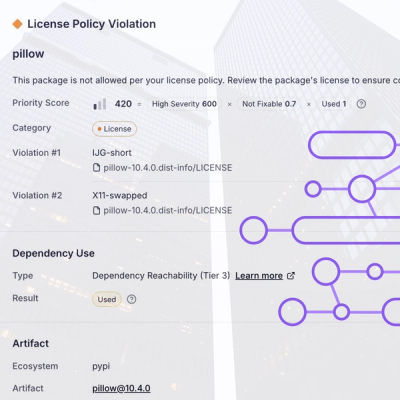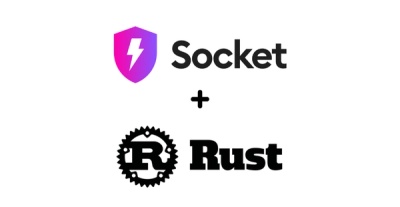
Research
/Security News
Critical Vulnerability in NestJS Devtools: Localhost RCE via Sandbox Escape
A flawed sandbox in @nestjs/devtools-integration lets attackers run code on your machine via CSRF, leading to full Remote Code Execution (RCE).
uploadcare-widget
Advanced tools
We’re announcing that the jQuery File Uploader package is officially deprecated as of September 1, 2025. Moving forward, we will no longer release updates or new versions of this widget. Support will also be discontinued, except in cases where critical security vulnerabilities need to be addressed.
If you're using jQuery File Uploader in your project, we recommend considering our web-component-based File Uploader, which contains all the latest features and updates.
We understand that this might affect your workflows, and we are committed to providing as much support as possible during this transition. If you have any questions or concerns, please reach out to us at help@uploadcare.com
jQuery File Uploader is a part of the Uploadcare file handling platform.
Uploads affect your web or mobile app performance. The widget ensures you integrate file uploading into your product in minutes, no matter the development stack.
The widget features:
We provide the uploading widget as a typical JavaScript library; it can be easily embedded in your site.
Using the older 2.x version? Check out the stuff under the
v2 tag.
See the complete widget docs here. If you're looking for the widget v2 docs, check out here.
There are a few types of JS bundles:
uploadcare.full.js — a full bundle with built-in jQuery.uploadcare.js — a bundle without built-in jQuery.uploadcare.api.js — a bundle without UI of the widget and built-in jQuery
JavaScript API only.uploadcare.lang.en.js — a bundle without built-in jQuery, en locale only.Each bundle has its minified version. Just add .min before .js,
e.g. uploadcare.min.js.
By default, uploadcare.js is exported for npm and other package managers.
You’re free to choose from the install methods listed below.
npm install uploadcare-widget
import uploadcare from 'uploadcare-widget'
Embed our client library via the <script> tag in the <head>
section of each page where you’d like to use the uploading widget.
Here is the CDN link to the current widget version with built-in jQuery,
<script src="https://ucarecdn.com/libs/widget/3.x/uploadcare.full.min.js" charset="utf-8"></script>
Or, if you’re already using jQuery on your page, consider loading the light version of the widget: without built-in jQuery,
<script src="https://code.jquery.com/jquery-3.4.1.min.js" charset="utf-8"></script>
<script src="https://ucarecdn.com/libs/widget/3.x/uploadcare.min.js" charset="utf-8"></script>
Check out the widget docs for more install methods.
Once you’re done with the install, there are two simple steps to take to use the widget.
Set your public key.
This can also sit in the <head> section,
<script>
UPLOADCARE_PUBLIC_KEY = 'YOUR_PUBLIC_KEY';
</script>
Your secret key is not required for the widget; (it’s quite careless for your page to include any secret keys anyway.
Insert widget element into your form,
<input type="hidden" role="uploadcare-uploader" name="my_file" />
By default, the library looks for inputs with the specified
role attribute and places widgets there.
Once a file is uploaded, this <input> gets a
CDN link with a file UUID. Your server then
receives this link, not file content.
We suggest placing the widget somewhere at the top of your form. Unlike regular inputs, our widget starts uploading files immediately after they get selected by a user, not on form submission. That way users can fill out the rest of your form while an upload is in progress. This can be a real time saver.
Check out our React component for jQuery File Uploader.
Check out our Angular 2+ wrapper for jQuery File Uploader.
angular-uploadcare can be used with Angular 1.
The widget is highly customizable with widget options. Check out the existing options and ways to set them in UC docs.
You might not want to use all the features that our widget exhibits. Or, perhaps, you might want to redesign the user experience without having to reinvent the wheel. Maybe, you're in pursuit of building a UI on top of the widget. For all of those use cases, we provide a JavaScript API. Feel free to control the default widget with it, or make use of its standalone components that can be combined with your solutions.
If you want to use Upload API directly and don't need a widget, try upload-client — a 7.3 kB JS library for uploading files.
It’s possible that your locale is not available in the widget yet. If that’s the case, contributing your locale might be a good idea. This can be done by forking the main repository and adding a localization file here.
Until that you can use UPLOADCARE_LOCALE_TRANSLATIONS
property to use your locale immediately.
The widget should work perfectly in a couple of the latest versions of major desktop browsers: Internet Explorer, Edge, Firefox, Google Chrome, Safari, and Opera. It is most likely to run well in older versions of major browser too, except for Internet Explorer < 10.
If you need the support for older browsers including IE8, consider using the widget v2 instead.
| Desktop | Mobile |
|---|---|
| Chrome: 37+ | Android Browser: 4.4+ |
| Firefox: 32+ | Opera Mobile: 8+ |
| Safari: 9+ | iOS Safari: 9+ |
| Edge: 12+ | IE Mobile: 11+ |
| IE: 10+ | Opera Mini: Last |
Check out jQuery File Uploader development guide.
If you think you ran into something in Uploadcare libraries which might have security implications, please hit us up at bugbounty@uploadcare.com or Hackerone.
We'll contact you personally in a short time to fix an issue through co-op and prior to any public disclosure.
Issues and PRs are welcome. You can provide your feedback or drop us a support request at hello@uploadcare.com.
FAQs
Uploadcare Widget: file uploader.
The npm package uploadcare-widget receives a total of 10,317 weekly downloads. As such, uploadcare-widget popularity was classified as popular.
We found that uploadcare-widget demonstrated a healthy version release cadence and project activity because the last version was released less than a year ago. It has 4 open source maintainers collaborating on the project.
Did you know?

Socket for GitHub automatically highlights issues in each pull request and monitors the health of all your open source dependencies. Discover the contents of your packages and block harmful activity before you install or update your dependencies.

Research
/Security News
A flawed sandbox in @nestjs/devtools-integration lets attackers run code on your machine via CSRF, leading to full Remote Code Execution (RCE).

Product
Customize license detection with Socket’s new license overlays: gain control, reduce noise, and handle edge cases with precision.

Product
Socket now supports Rust and Cargo, offering package search for all users and experimental SBOM generation for enterprise projects.